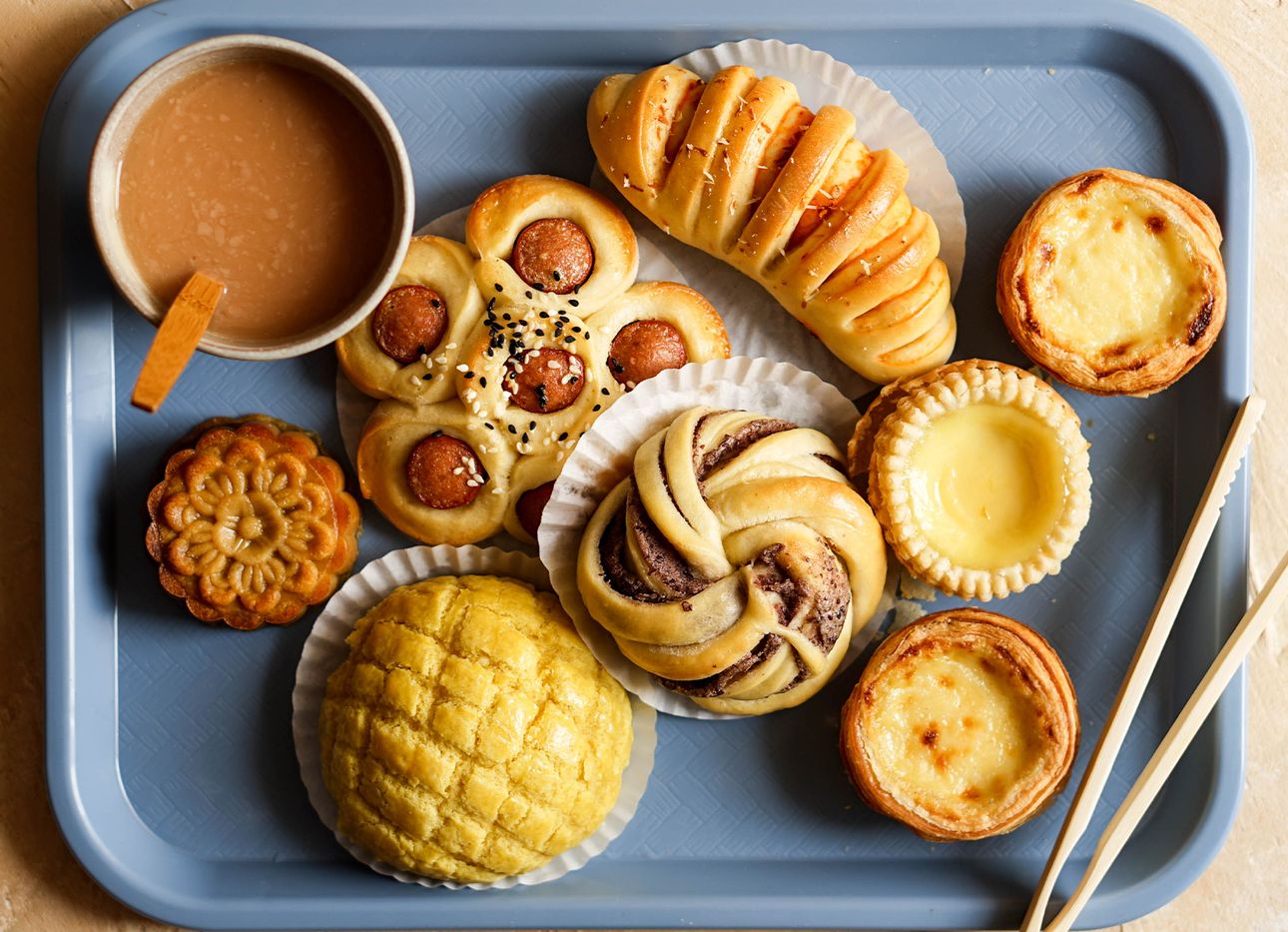
The First-Ever Comprehensive Chinese Baking Cookbook
While “matcha,” “bao,” and “red bean” have become increasingly familiar parts of the American food lexicon, books on how to make and serve them are few to none. “It’s very surprising that, even in 2021, there hasn’t ever really been a comprehensive cookbook covering Chinese baking,” says Bay Area food blogger Kristina Cho. She addresses this absence with her new book, Mooncakes and Milk Bread: Sweet and Savory Recipes Inspired by Chinese Bakeries (Harper Horizon), a detailed guide for preparing a wide range of treats that’s enhanced with profiles of exceptional Chinese bakeries—and the delectable goods they create—from across the country.
Largely inspired by Cho’s eclectic identity as a second-generation Chinese American who grew up in the Midwest, the book’s carefully balanced contents span traditional staples—including egg tarts, cocktail buns, and char siu bao (pork-filled buns)—and reimagined takes on tried-and-true classics, such as an “everything bagel bao” and milk-bread doughnuts with salted egg-yolk cream. Other recipes, pulled straight from Cho’s own family favorites, are as authentic as they get. These include her grandfather’s beloved almond cookies and her grandmother’s fa gao (steamed cupcakes), which she makes every Chinese New Year, as well as her white sugar cake, a rice flour concoction that’s fermented to achieve a spongy, airy quality. Most nostalgic for Cho is her recipe for hot dog flower buns, a favorite savory snack that her father would buy for Cho and her brother during childhood trips to visit family in Hong Kong.
Beyond the book’s approachable instructions—which include useful tips for stamping mooncakes, scoring and twisting dough, and preventing steamed dumplings from collapsing—readers might notice a few details that set the recipes apart. Notably, much of the fare isn’t actually baked at all. Many apartments and residential homes in Hong Kong—the origin of many of Cho’s recipes—lack ovens, so several treats are prepared using other methods such as steaming or frying. Additionally, despite being desserts, many of the foods aren’t particularly sugary; Chinese baked goods typically maintain a delicate balance of sweetness, and are never cloying.
Cho compiled the recipe book with both Chinese bakery veterans and experimental home bakers in mind. For the latter group, she says, her aim is to offer “new flavors and techniques to try, and to inspire them to expand their definition of what baking is. And for readers who grew up going to these bakeries,” she says, “I hope that they see a part of themselves represented on the pages.”